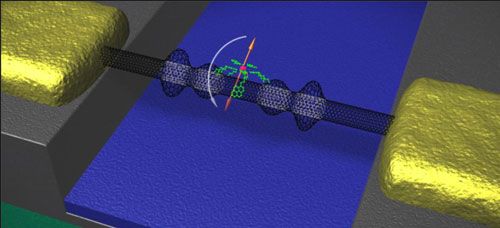The Einstein-de-Haas effect shows that magnetism results from the angular momentum of electrons and is considered as the macroscopic evidence of electron spin. Researchers at Karlsruhe Institute of Technology (KIT) and at the Institut NÉEL at the CNRS in Grenoble were the first to investigate this effect for an individual spin and formulated it as the new “Quantum Einstein-de-Haas effect”. In Nature Communications, they report on their work (“Quantum Einstein-de Haas effect”).
The mechanical properties of the carbon nanotube (black) cause the spin (orange) of a molecule (green and red) to flip over. (Illustration: Christian Grupe)
Read more









Comments are closed.